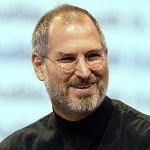Last week, I began this two-part post with some of the results of a survey by Boston-based marketing consultancy Cone Communications that irrefutably shows that the annual onslaught of pink products to support breast cancer awareness is backfiring among customers.
I posited that consumers see these efforts as what they really are: a short-term promotion designed to drive a bump in sales, but without any long-term commitment to the cause.
To see what I mean, take a look at online retailer Etsy’s “Tickled Pink” campaign.
The atrocious title aside, the site is remarkably long on pink product, but virtually lacking in any specifics about how much of a donation would be made to breast cancer charities, or even which charities would be the beneficiaries. One blogger dug deeper and found that of the 24 products listed, only eight actually claim to support breast cancer organizations. To my mind, this is far from anything resembling cause marketing.
I remain a fervent believer in the power of cause, not just as a way to drive sales and build brand trust and affinity, but also as a means of visibly and concretely demonstrating what the brand/company – and its people – stand for. But, to do so, cause must be looked at seriously and strategically, with an allocation of significant resources, a long-term view, total transparency and specific and measurable metrics. (See Part One, for two sterling examples from Avon and AT&T).
In the midst of this October’s breast cancer campaigns, I was delighted to see another kind of purpose-based marketing initiative emerge: Red Bull Stratos and its sponsorship of Felix Baumgartner’s record-breaking fall to earth from a height of 24 miles above the Earth.

I have read several posts from marketing commentators and columnists that called this a terrific example of corporate sponsorship. And, I would agree.
But, I think there is more to it than just sponsorship. I would call it “mission marketing”.
It was indeed a once-in-a-lifetime event viewed by many millions around the world. It also resulted in breaking such records as free fall from the highest altitude, longest free fall time, and fastest acceleration (by human or object) to the speed of sound. But Red Bull Stratos focused on the even bigger idea: that this was also a meticulously planned and executed mission with a goal of delivering substantive scientific data.
Red Bull’s sponsorship included the deployment of a team of the finest aeronautics and medical professionals who studied the jump for its scientific value. According to the Red Bull Stratos website, that included:
- Aiding development of a new generation of space suits (including enhanced mobility and visual clarity) to aid passenger/crew exit from space;
- Developing protocols for exposure to high altitude/high acceleration
- Exploring the effects on the human body of supersonic acceleration and deceleration, including innovations in parachute systems.

In my opinion, this is big – huge – thinking at its best. It is also in complete support of the kind of benefits that Red Bull aspires to represent: energy, concentration, focus and determination.
Appropriately and refreshingly, it was a low-key – dare I say humble – partnership. Take a look at the website at the center of the campaign. The brand is almost nonexistent in its presence, just enough to inform the visitor of its sponsorship. The event and the science constitute the visitor experience. And Red Bull underwrote lots of digital content for deep immersion.
What I also found rare was Red Bull’s exceptional patience for the payoff. The jump was first announced in early 2010, over two-and-a-half years before it actually occurred. But once Baumgartner jumped on October 14th, the world turned to the Red Bull Stratos site, the official home of all information related to the jump. The media coverage alone must have numbered in the billions of branded impressions. Red Bull made excellent use of its social media properties to drive engagement and consumer connection.
Is that enough? Will it drive sales and closer brand affinity? It may be too early to tell and will certainly depend upon how Red Bull continues to find ways to extend its connection to the event and to the scientific mission. But, given how well the brand has succeeded to date, I have every reason to believe they will.
